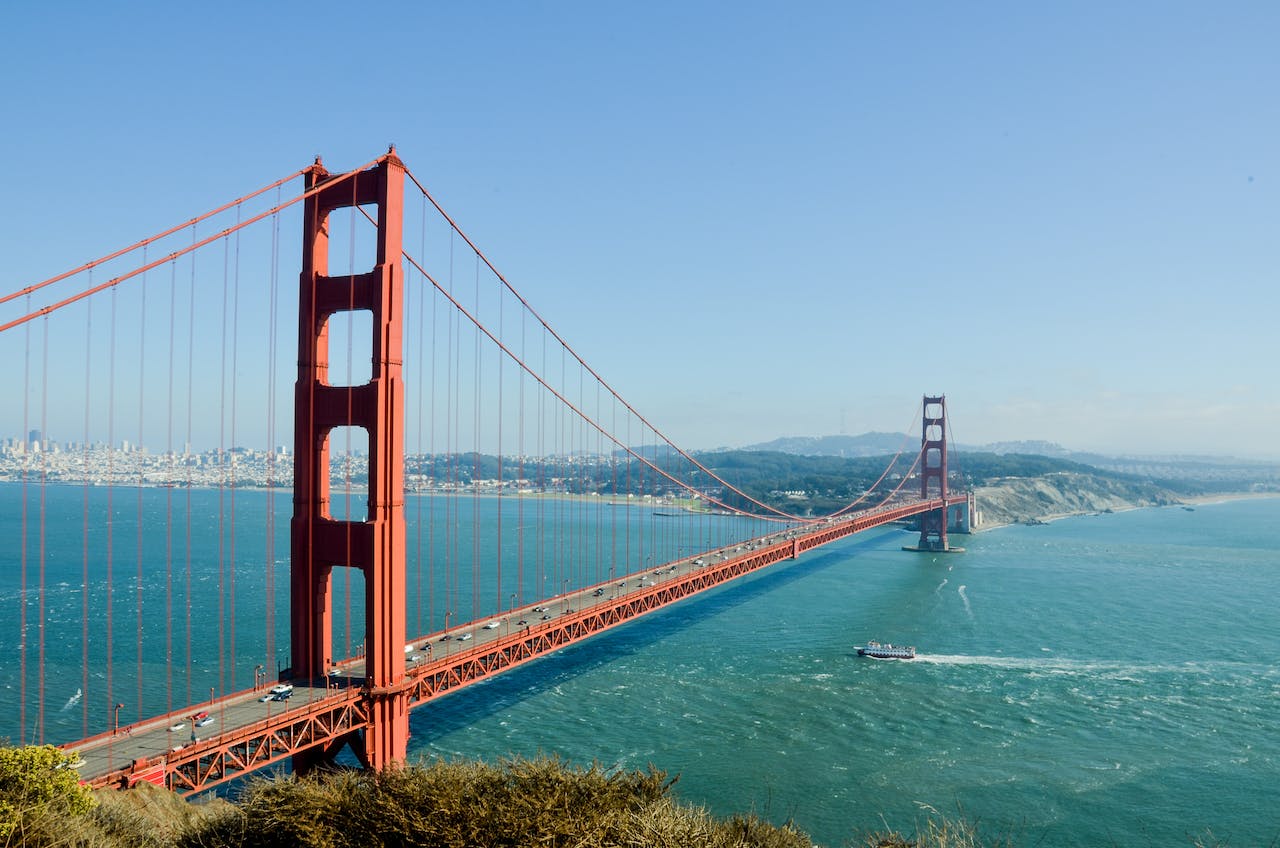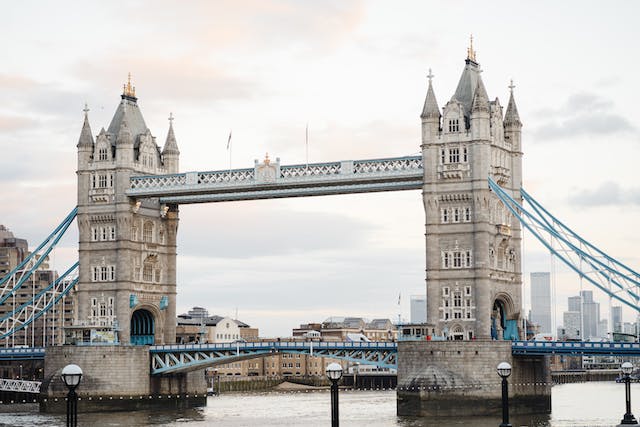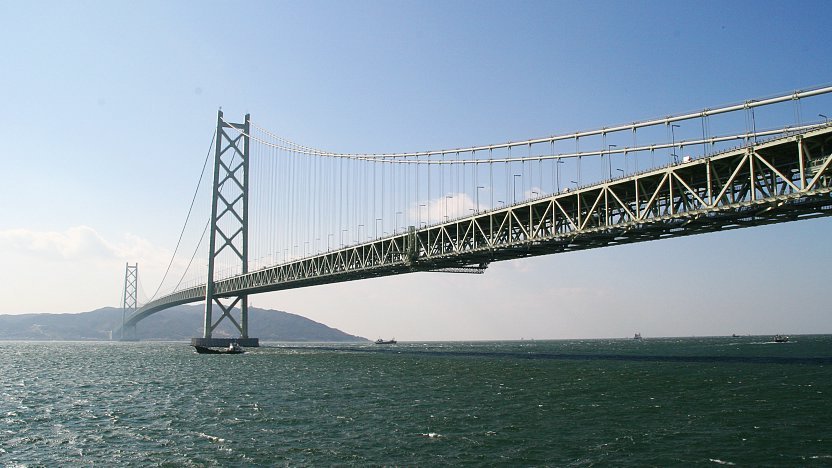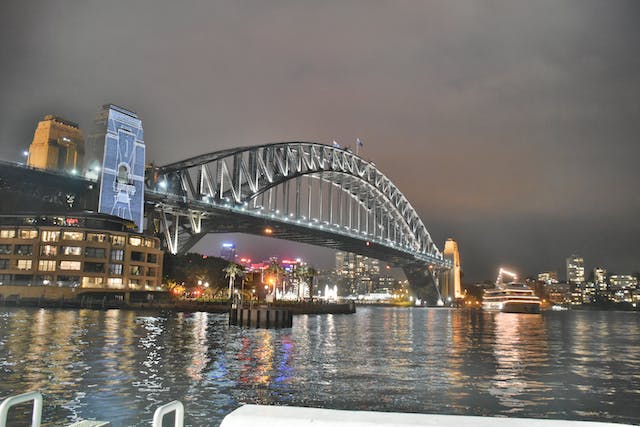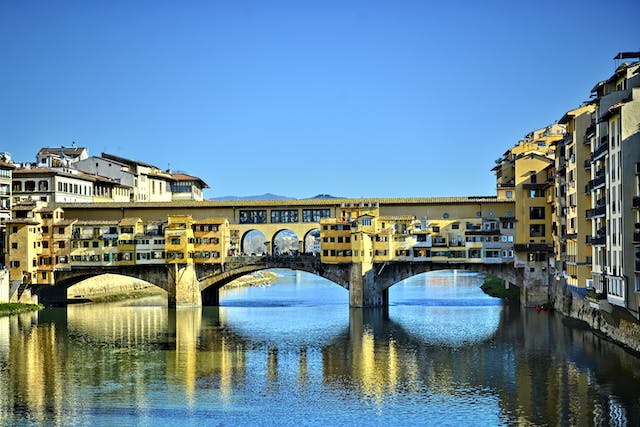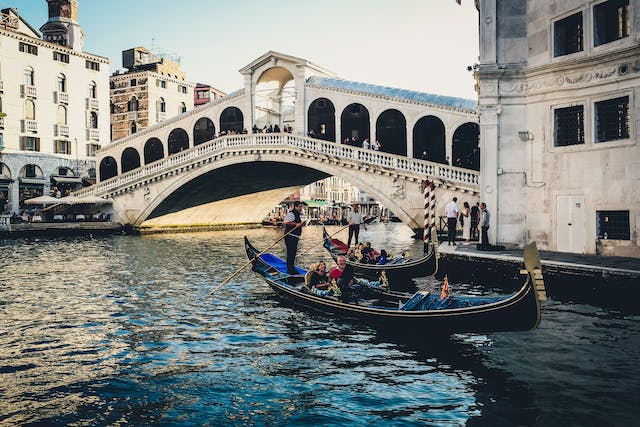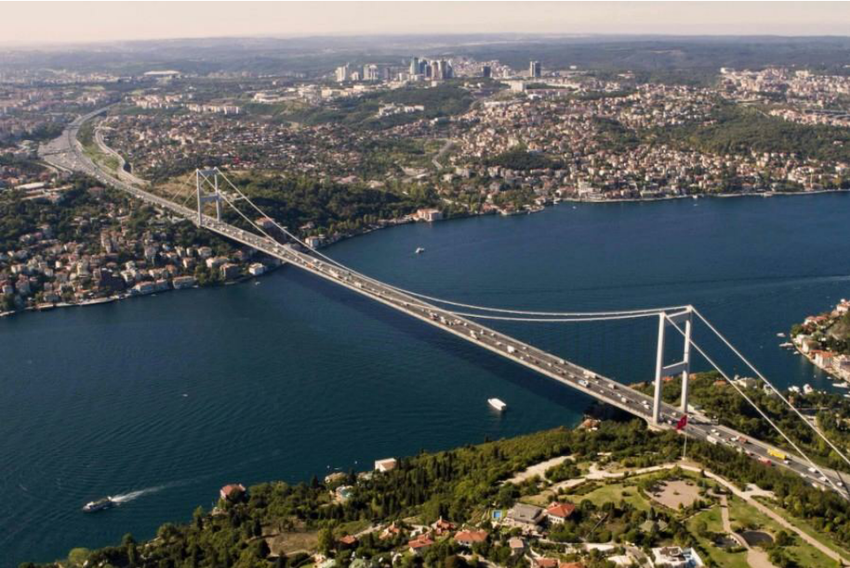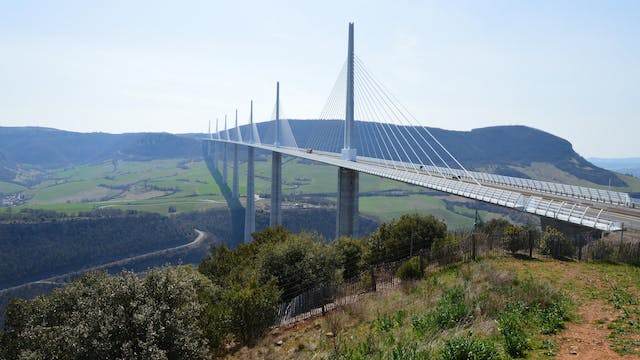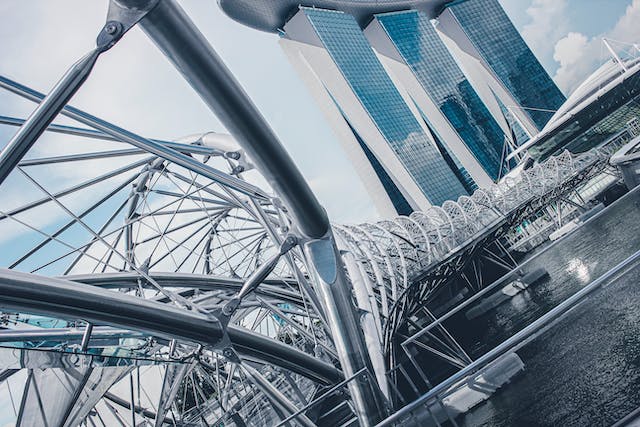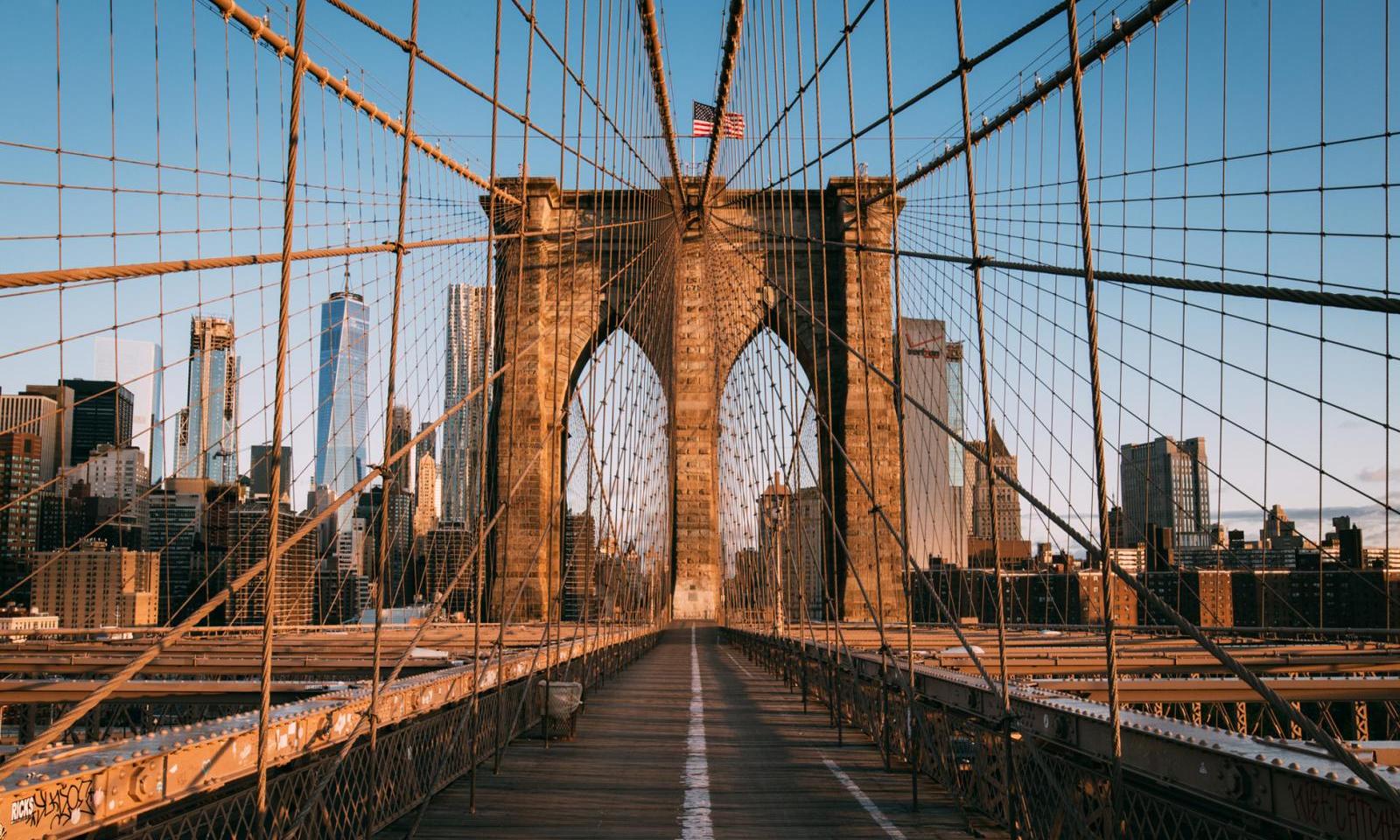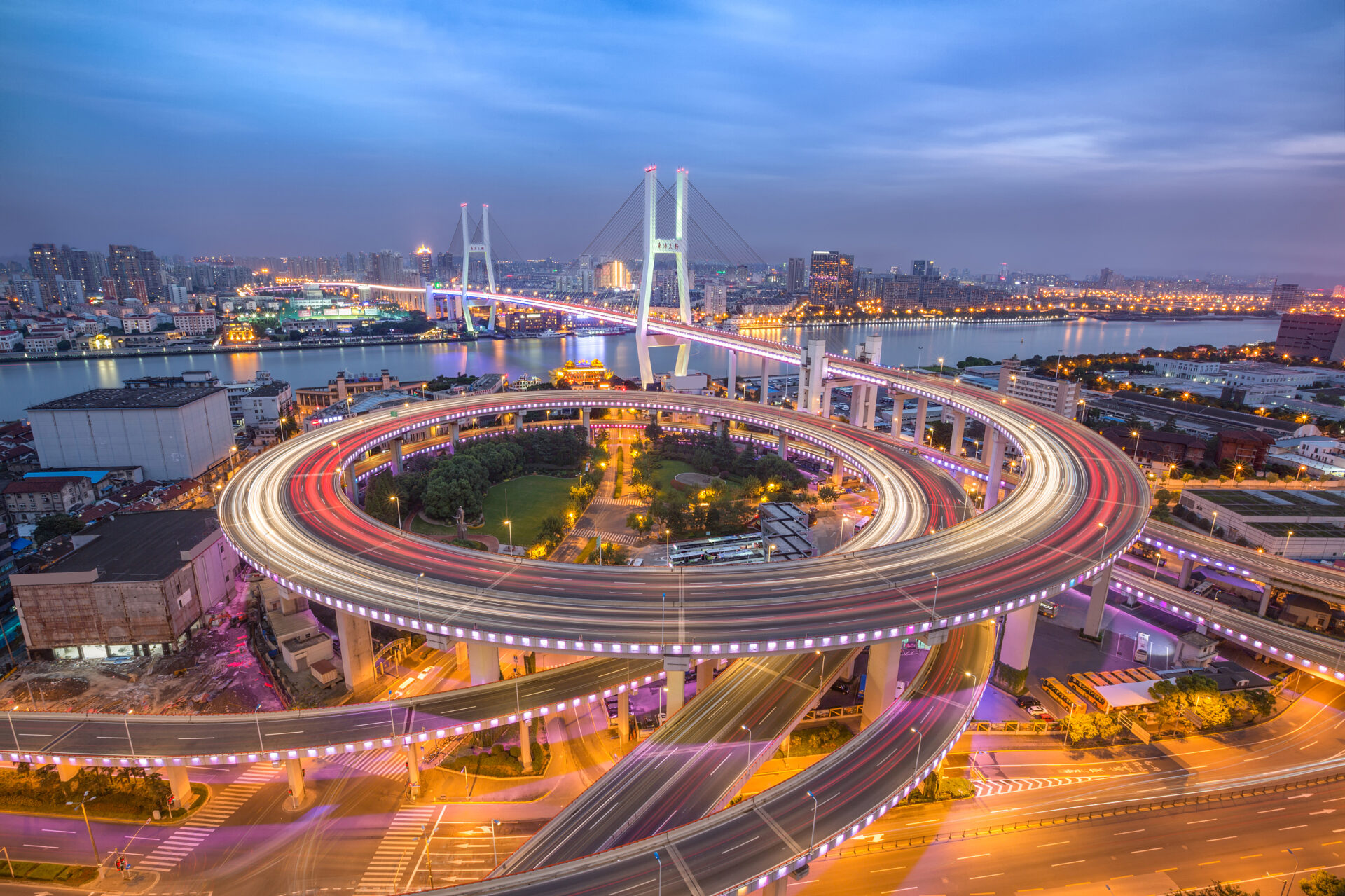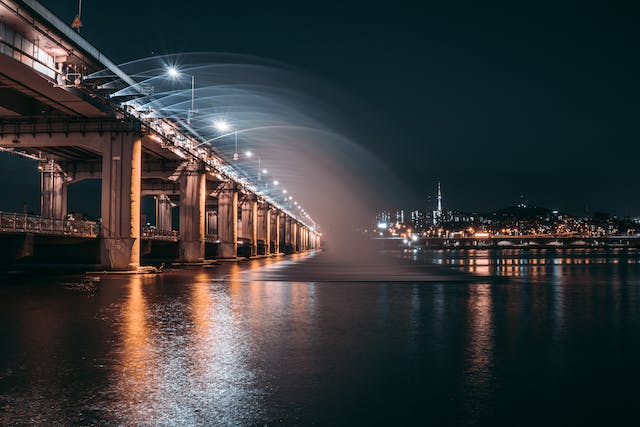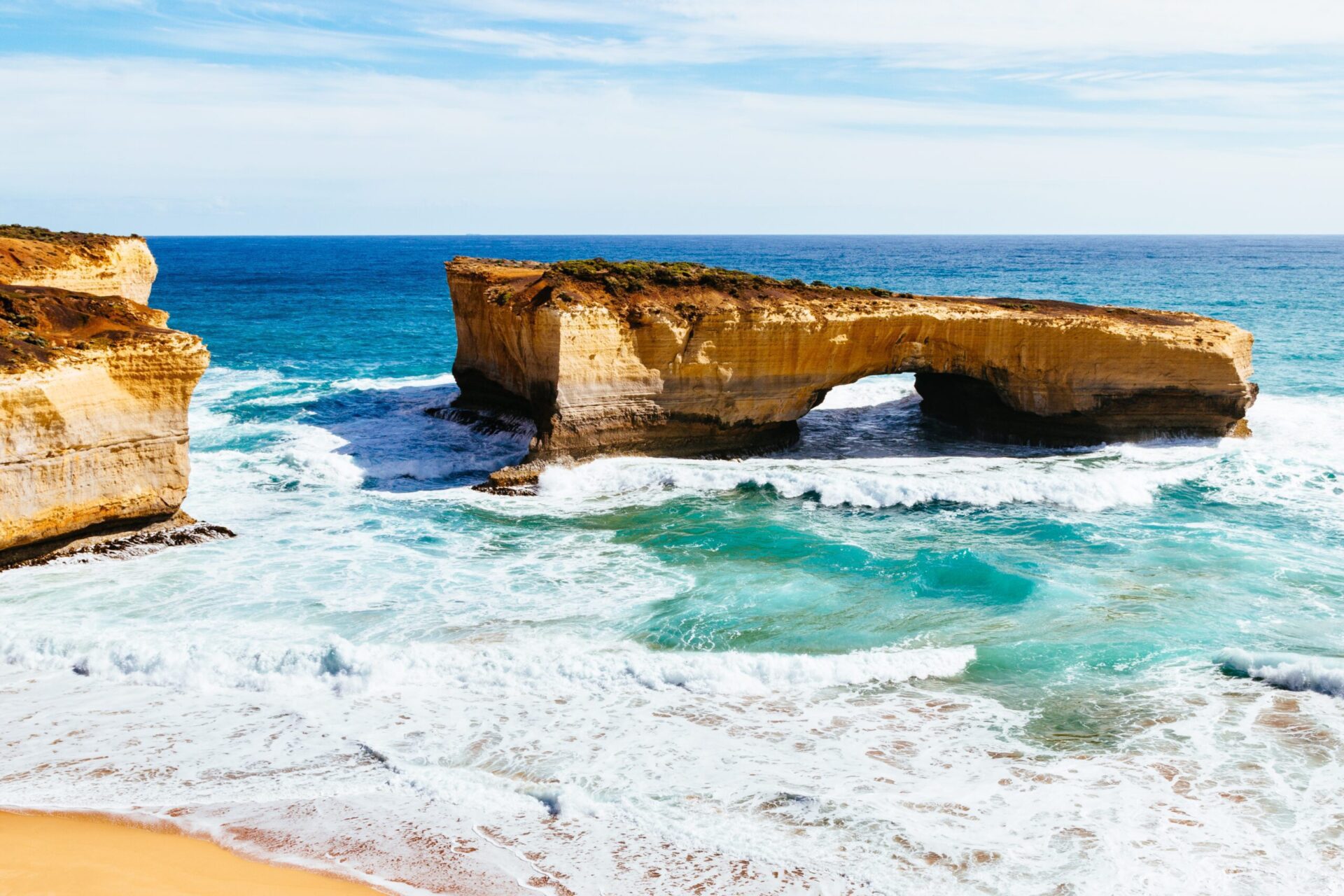Most Beautiful Bridges in the World
by Prasad ·
Beauty in architecture is a subjective concept that transcends cultural boundaries. Bridges, as integral components of global infrastructure, serve not only functional purposes but also captivate the human imagination with their aesthetics. This article explores some of the most beautiful bridges in the world, examining their history, engineering marvels, and cultural significance.
Golden Gate Bridge
The Golden Gate Bridge stands as an iconic symbol of San Francisco, one of the most beautiful bridges in the World with a rich history and breathtaking design. Its engineering marvel and the panoramic views it offers to visitors make it a must-see. Recent preservation efforts have enhanced its structural integrity, ensuring it remains a timeless masterpiece.
The Golden Gate Bridge, completed in 1937, holds a unique place in American history. Its construction during the Great Depression provided employment opportunities and showcased the nation’s determination to overcome challenges. The bridge quickly became a symbol of hope and progress.
The bridge’s engineering brilliance is evident in its art deco design and innovative construction techniques. Chief Engineer Joseph Strauss and Architect Irving Morrow collaborated to create a suspension bridge with a 4,200-foot main span, making it one of the longest and most remarkable of its time. The distinctive International Orange color was chosen not just for visibility in San Francisco’s frequent fog but also for its aesthetic appeal.
One of the Golden Gate Bridge’s unique features is the pedestrian walkway, allowing visitors to experience the bridge up close. The views from the walkway are nothing short of spectacular, offering panoramic vistas of the San Francisco Bay, Alcatraz Island, and the city skyline. The bridge’s towers, standing at 746 feet, provide an awe-inspiring sight from both near and far.
Preserving the Golden Gate Bridge for future generations is a top priority. Ongoing maintenance and preservation efforts include regular inspections, paint restoration, and seismic retrofitting to ensure the bridge’s structural integrity. Recent enhancements, such as the addition of LED lights in 2013, contribute to its nighttime beauty, transforming it into a stunning display of color of this most beautiful bridges in the World.
Tower Bridge, London
Tower Bridge in London, steeped in history and architectural brilliance, is not just a crossing over the Thames but an enchanting spectacle. Its unique features and nighttime illuminations add to its allure. Beyond its architectural significance, the bridge played a role in historical events and holds symbolism for the city leads it included in most beautiful bridges in the World.
Constructed over the River Thames, Tower Bridge was completed in 1894 and designed by Sir Horace Jones and Sir John Wolfe Barry. Its construction aimed to ease road traffic while maintaining access to the Pool of London docks. The bridge’s name is derived from the nearby Tower of London, and it has since become an integral part of London’s landscape.
What sets Tower Bridge apart is its bascule design, allowing the central span to be raised to accommodate maritime traffic. The twin towers, with their neo-Gothic architectural style, contribute to the bridge’s distinctive appearance. The hydraulic system used for lifting the bascules was a marvel of Victorian engineering and remains operational today.
As evening falls, Tower Bridge transforms into a luminous spectacle. Its facade is adorned with thousands of LED lights, creating a captivating display against the London night sky. The interplay of lights reflects off the River Thames, adding to the enchanting aesthetics of the bridge.
Tower Bridge has witnessed numerous historical events, including royal processions and iconic moments. Its symbolism extends beyond its functional role, representing the endurance of London through changing times. The bridge is a living testament to the city’s resilience and ability to embrace modernity while preserving its historical identity.
Akashi Kaikyō Bridge
The Akashi Kaikyō Bridge, also known as the Pearl Bridge, is a symbol of Japan’s engineering prowess and resilience. Spanning the Akashi Strait, this suspension bridge stands as a testament to human innovation, overcoming natural challenges and providing a vital link between Awaji Island and the city of Kobe.
Completed in 1998, the Akashi Kaikyō Bridge boasts the longest central span of any suspension bridge globally, measuring an impressive 1,991 meters. This record-breaking achievement presented engineers with significant challenges, including strong tides, high winds, and seismic activity due to the region’s location along the Pacific Ring of Fire.
The region is prone to earthquakes, and the Akashi Kaikyō Bridge was designed with these threats in mind. The bridge is equipped with pendulum bearings and other seismic countermeasures to withstand the forces unleashed during an earthquake. Its engineering resilience was put to the test in 1995 during the Great Hanshin Earthquake, and the bridge remarkably survived with minimal damage.
Image source: Internet
Beyond its engineering marvels, the Akashi Kaikyō Bridge holds immense symbolic importance for Japan and becoming most beautiful bridges in the World. The bridge is seen as a symbol of the nation’s ability to overcome challenges and adversity. Its construction marked a significant step forward in Japan’s post-war recovery and economic resurgence.
The Akashi Kaikyō Bridge incorporates cutting-edge technologies to ensure its structural integrity and safety. Regular maintenance is carried out to address the wear and tear caused by the elements and ensure the bridge’s continued functionality. Technological innovations, such as advanced monitoring systems, contribute to the bridge’s ongoing success as a crucial transportation link.
Sydney Harbour Bridge
The Sydney Harbour Bridge, an iconic structure gracing the Sydney skyline, seamlessly blends architectural grandeur with practical functionality. As one of Australia’s most recognizable landmarks, this bridge not only connects the city’s central business district with the North Shore but also stands as a testament to engineering innovation and design excellence.
Completed in 1932, the Sydney Harbour Bridge is a marvel of design innovation. The bridge’s arch, spanning 503 meters, is not only an engineering feat but also an architectural wonder. The blend of Art Deco and structural efficiency creates an aesthetic appeal that enhances the Sydney skyline.
The Sydney Harbour Bridge is globally renowned for its role in the city’s New Year’s Eve celebrations. The annual fireworks display, with the bridge as a central element, attracts millions of viewers worldwide. Its image is synonymous with the vibrant and lively spirit of Sydney, earning the bridge international recognition.
Beyond its physical connection, the Sydney Harbour Bridge is deeply ingrained in Australian culture. It serves as a symbol of unity, linking the city’s inhabitants and representing the country’s progress and resilience. The bridge’s silhouette is an integral part of the Sydney identity, featured on postcards and in various forms of artistic expression.
Offering a unique and thrilling experience, the Sydney Harbour Bridge allows adventurous visitors to embark on guided bridge climbs. Scaling the bridge provides breathtaking panoramic views of Sydney Harbour and the surrounding areas. This tourism activity not only contributes to the local economy but also adds to the bridge’s allure leading it to most beautiful bridges in the World.
Ponte Vecchio, Florence
Ponte Vecchio, the “Old Bridge,” in Florence, Italy, is not just a river crossing but a living testament to the city’s rich history and architectural charm. Spanning the Arno River, this bridge holds a unique place in Florence’s heart, captivating visitors with its medieval architecture and romantic atmosphere.
Built during the Roman era, Ponte Vecchio has withstood the test of time and witnessed centuries of Florentine history. Originally housing butchers’ shops, the bridge evolved over the years. Today, it stands as a symbol of Florence’s resilience and cultural heritage, having survived various floods and wars.
What sets Ponte Vecchio apart is its distinct architecture. The bridge is lined with shops, creating a covered passage that offers a unique shopping experience. These shops, known for jewelry, art, and souvenirs, add to the bridge’s vibrant atmosphere. The medieval architecture, with its arches and stone construction, transports visitors to a bygone era.
Ponte Vecchio exudes a romantic ambiance that is unrivaled. As the Arno River flows beneath, the bridge provides a picturesque setting for couples and artists alike. The blend of history, architecture, and the gentle flow of the river creates an enchanting environment that has inspired poets and painters throughout the ages.
Ponte Vecchio is not just a static landmark but a dynamic space that hosts artistic events and festivals it is one of the most beautiful bridges in the World. Local artists often showcase their work on the bridge, adding a touch of creativity to its historical significance. Festivals and events celebrate the bridge’s cultural importance and contribute to Florence’s vibrant arts scene.
Rialto Bridge, Venice
Venice, with its iconic waterways, boasts the Rialto Bridge, a masterpiece of design and finesse. Beyond being a tourist attraction, it provides a romantic setting in the heart of the city. Local traditions, such as festivals and events, add to the bridge’s allure and cultural significance.
Venice, renowned for its intricate network of canals, is a city that embraces its aquatic surroundings. The Rialto Bridge, built in 1591, has been a vital crossing point since the medieval era, connecting the districts of San Marco and San Polo. Its construction marked a significant architectural achievement during the Venetian Republic’s golden age.
The Rialto Bridge boasts a unique design characterized by a single central arch flanked by two smaller arches. Designed by Antonio da Ponte, this architectural marvel incorporates a sweeping ramp that allows pedestrians to ascend and enjoy panoramic views of the Grand Canal. The bridge’s stone structure and elegant balustrades showcase the craftsmanship of its time.
Today, the Rialto Bridge is not only a practical crossing but also a major tourist attraction. Visitors marvel at its beauty and the bustling activity of the Grand Canal below. The bridge’s location amidst charming Venetian architecture and its romantic setting make it a favorite spot for couples and photographers seeking the quintessential Venetian experience.
The Rialto Bridge is intertwined with local traditions and events. The nearby Rialto Market has been a hub of commerce for centuries, and the bridge played a crucial role in the trading activities of the city. The annual Historical Regatta, a rowing competition dating back to the 13th century, passes beneath the Rialto Bridge, adding a historical touch to its surroundings within most beautiful bridges in the World.
Bosphorus Bridge, Istanbul
The Bosphorus Bridge in Istanbul, Turkey, is not just a physical connection across the Bosphorus Strait; it is a symbolic link between two continents and a testament to Istanbul’s rich history and strategic significance. This engineering marvel seamlessly integrates into the cityscape, connecting Europe and Asia in a harmonious fusion within the most beautiful bridges in the World.
Completed in 1973, the Bosphorus Bridge serves as a critical transportation artery, connecting the European and Asian sides of Istanbul. Its strategic location at the meeting point of the Aegean, Mediterranean, and Black Seas positions it as a gateway between continents, making it a vital element of Turkey’s cultural and economic landscape.
Image source: Internet
The Bosphorus Bridge’s distinctive suspension design, with its towering pylons and sweeping curves, captures the eye and stands as a testament to engineering innovation. The suspension cables, anchored securely to the ground, allow the bridge to span the Bosphorus Strait, providing a picturesque silhouette against the Istanbul skyline.
Traversing the Bosphorus Bridge not only offers a seamless journey between Europe and Asia but also provides panoramic views of Istanbul. The city’s iconic landmarks, including the Hagia Sophia, the Blue Mosque, and the Topkapi Palace, unfold in a breathtaking panorama, creating a memorable experience for commuters and visitors alike.
Millau Viaduct, France
The Millau Viaduct in France is not just a bridge; it is a stunning work of modern engineering that gracefully spans the Tarn River Valley. As the tallest bridge in the world, this viaduct seamlessly integrates into the natural landscape, creating a harmonious balance between human innovation and the beauty of the French countryside.
Completed in 2004, the Millau Viaduct holds the record as the world’s tallest bridge, with its highest tower reaching a height of 343 meters. Designed by architect Sir Norman Foster and structural engineer Michel Virlogeux, this cable-stayed bridge is a masterpiece of architectural innovation for it to contain within the most beautiful bridges in the world. The slender, tapering towers and the cable-stayed design contribute to its aesthetic appeal.
One of the remarkable aspects of the Millau Viaduct is its minimal impact on the environment. The viaduct’s slender design and the use of high-strength concrete reduce the visual impact on the landscape. The bridge seems to float above the valley, providing unobstructed views of the surrounding natural beauty.
The Millau Viaduct serves a crucial role in the French transportation network, providing a high-speed link between Paris and the Mediterranean coast. Beyond its functional purpose, the viaduct has become a tourist attraction, drawing visitors from around the world who marvel at its architectural brilliance and the breathtaking views it offers.
Sustainability was a key consideration in the construction of the Millau Viaduct. The use of high-strength, self-compacting concrete and the implementation of sustainable construction practices showcase a commitment to minimizing the environmental footprint. The viaduct stands as a testament to the possibilities of combining infrastructure needs with eco-conscious design.
The Helix Bridge, Singapore
The Helix Bridge in Singapore is more than a pedestrian bridge; it is a symbol of contemporary architectural brilliance and engineering innovation. Forming an integral part of the Marina Bay landscape, this spiral-shaped bridge captivates visitors with its unique design and its role as a pedestrian link between iconic landmarks.
Completed in 2010, the Helix Bridge draws inspiration from the structure of DNA, with its double-helix spiral design. This distinctive structure is not only an aesthetic marvel but also serves as a symbol of life and renewal. The bridge’s intricate design includes a series of canopies that provide shade for pedestrians, adding to its functional and visual appeal.
As the sun sets, the Helix Bridge transforms into a mesmerizing display of lights. The entire length of the bridge is adorned with LED lights that create a stunning visual effect, especially against the backdrop of the Marina Bay skyline. The nightly illumination adds to the bridge’s allure and contributes to Singapore’s reputation for captivating cityscapes.
Functionally, the Helix Bridge serves as a vital pedestrian link, connecting major landmarks in the Marina Bay area, including Marina Bay Sands and the Singapore Flyer. Its strategic location enhances the connectivity of the city and provides pedestrians with a pleasant stroll amid captivating surroundings.
The Helix Bridge incorporates sustainable design elements to minimize its environmental impact. The bridge’s canopies are strategically positioned to provide shade, reducing the heat absorbed by the structure. Additionally, the use of energy-efficient LED lighting aligns with Singapore’s commitment to sustainability and energy conservation.
Brooklyn Bridge, New York
The Brooklyn Bridge, an iconic symbol of New York City, stands as a testament to human ingenuity and architectural brilliance. Connecting the boroughs of Manhattan and Brooklyn, this historic suspension bridge has not only facilitated transportation but has also become a cultural landmark ingrained in the city’s identity.
Completed in 1883, the Brooklyn Bridge was a pioneering engineering achievement of its time. Designed by John A. Roebling and later overseen by his son, Washington Roebling, the bridge introduced innovative suspension techniques. Its twin towers and graceful arched spans were not only functional but also became iconic elements of the New York skyline while it recognizes as one of most beautiful bridges in the World.
Walking across the Brooklyn Bridge is a quintessential New York experience. The elevated pedestrian walkway offers panoramic views of the cityscape, including the Statue of Liberty, the Manhattan skyline, and the East River. The bridge’s Gothic-inspired arches and intricate cable patterns add to its visual appeal.
Image source: Internet
Beyond its engineering prowess, the Brooklyn Bridge holds profound cultural symbolism. It represents the resilience and determination of the American spirit, having endured challenges during its construction, including a tragic accident and financial setbacks. The bridge has featured prominently in literature, art, and cinema, solidifying its place in the American consciousness.
As the sun sets, the Brooklyn Bridge transforms into a luminous spectacle. The carefully placed LED lights along the cables and towers create a romantic ambiance, making it a popular destination for evening strolls and photography. The bridge’s silhouette against the city lights adds to its allure.
Functionally, the Brooklyn Bridge serves as a vital commuting lifeline, connecting Manhattan and Brooklyn for pedestrians, cyclists, and motorists. Its architecture has inspired subsequent bridge designs globally, influencing the field of civil engineering and urban planning.
Nanpu Bridge, Shanghai
The Nanpu Bridge in Shanghai, China, is not just a river-crossing structure; it is a testament to modern engineering and a distinctive feature of Shanghai’s skyline. With its unique spiral design, the bridge seamlessly integrates functionality with aesthetic appeal, connecting the city’s bustling districts.
Completed in 1991, the Nanpu Bridge distinguishes itself with a unique spiral approach. The bridge’s spiral ramps serve both aesthetic and practical purposes, allowing for a gradual ascent and descent, which is particularly beneficial for heavy traffic flow. The design adds a touch of architectural innovation to the dynamic cityscape becoming this bridge one of most beautiful bridges in the World.
Image Source: Internet
The Nanpu Bridge plays a crucial role in connecting the Puxi and Pudong districts of Shanghai. Puxi, on the west bank of the Huangpu River, is known for its historic charm and commercial centers, while Pudong, on the east bank, is synonymous with modern skyscrapers and the city’s financial hub. The bridge serves as a vital link for commuters and contributes to the city’s economic vitality.
As night falls, the Nanpu Bridge transforms into a luminous spectacle. The carefully placed LED lights along the spiraling ramps create a captivating visual display. The bridge’s nighttime illumination enhances the city’s modern skyline and offers spectacular views for residents and visitors alike.
Beyond its aesthetic features, the Nanpu Bridge incorporates technological advancements to ensure structural resilience. The bridge is equipped with seismic isolation devices to withstand the region’s occasional earthquakes. This commitment to safety reflects Shanghai’s dedication to modern infrastructure and urban development.
The Nanpu Bridge is not merely a transportation link; it is an integral part of Shanghai’s identity. Its distinctive design and strategic location make it a recognizable symbol of the city’s evolution into a global metropolis. The bridge reflects Shanghai’s ability to seamlessly blend tradition with modernity.
Banpo Bridge, Seoul
Combining artistry with technology, the Banpo Bridge in Seoul features an artistic water fountain display. Beyond its functional role, it has become a recreational space with cultural significance. Nighttime light shows and cityscape views add to its charm, and the bridge often hosts community events and festivals, fostering a sense of community.
One of Banpo Bridge’s standout features is the Moonlight Rainbow Fountain, recognized in the Guinness World Records as the longest bridge fountain in the world. This mesmerizing display of water and lights transforms the bridge into a dazzling spectacle during the evenings, creating a harmonious blend of nature and technology. These features lead it to become most beautiful bridges in the World.
The Moonlight Rainbow Fountain is not just a static display; it is a dynamic water show synchronized with music. The choreographed water jets, illuminated by vibrant LED lights, dance to the rhythm of music, creating an immersive and enchanting experience. This nightly show has become a symbol of Seoul’s modernity and artistic expression.
In addition to its fountain display, Banpo Bridge features a rainbow-shaped pedestrian walkway that spans both sides of the bridge. This walkway allows pedestrians to enjoy panoramic views of the Han River and the surrounding cityscape. The thoughtful integration of a pedestrian-friendly space enhances the bridge’s accessibility and appeal.
Banpo Bridge is not only a functional crossing but also an integral part of the city’s green spaces. The surrounding Banpo Hangang Park offers residents and visitors a peaceful retreat along the Han River, with walking paths, gardens, and recreational areas. The bridge serves as a connecting element within this urban oasis.
The technological aspects of Banpo Bridge extend beyond the fountain show. The bridge incorporates eco-friendly LED lights, contributing to energy efficiency and sustainability. This commitment to environmental considerations aligns with Seoul’s efforts to balance urban development with ecological consciousness.
Twelve Apostles Bridge, Australia
Nature and architecture intertwine with the Twelve Apostles Bridge in Australia. Integrating seamlessly into the landscape, it considers environmental factors and embraces sustainability. Indigenous connections and cultural stories further enhance the bridge’s significance, creating a unique blend of nature, culture, and engineering.
Completed in [year], the Twelve Apostles Bridge serves as a gateway to one of Australia’s most renowned natural attractions. The Twelve Apostles, a series of limestone stacks rising majestically from the Southern Ocean, are a sight to behold. The bridge enhances accessibility, allowing visitors to witness the rugged beauty of the coastline with ease.
The Great Ocean Road, stretching along Victoria’s coastline, is known for its scenic beauty, and the Twelve Apostles Bridge seamlessly integrates into this iconic route. Its engineering marvel complements the natural wonders, offering a captivating experience for travelers exploring this coastal stretch.
Image source: Internet
The bridge’s design is a balance between functionality and aesthetics. Its architecture harmonizes with the coastal landscape, providing unobstructed views of the Twelve Apostles and the surrounding natural beauty. The bridge becomes a part of the scenic ensemble, enhancing the overall experience for those traversing the area.
Australia’s commitment to environmental conservation is reflected in the Twelve Apostles Bridge’s design. Sustainable construction materials and eco-friendly practices minimize the impact on the surrounding ecosystem. The bridge serves as a model for blending infrastructure development with ecological responsibility.
The Twelve Apostles Bridge not only serves as a passage but enhances the overall tourist experience. Interpretive centers near the bridge provide information about the geological formations, indigenous history, and the significance of preserving this coastal gem. Visitors can engage with the cultural and natural aspects of the area.
In this article we discussed about most beautiful bridges in the world and their important feature and technical aspects. In addition to above discussed bridges, there are many other bridges that are important aesthetically and technically.

